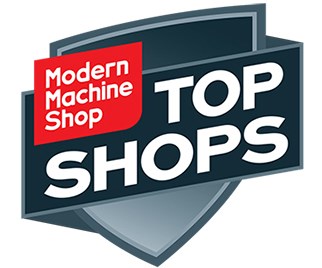Why the 91±¬ÁĎÍř Workshop at IMTS Will Be Worth Your While
Our 91±¬ÁĎÍř workshop at IMTS will highlight processes and practices that successful shops are using to grow their machining businesses and become more profitable.
Share






Last year was big for our 91±¬ÁĎÍř benchmarking program in that we hosted our inaugural 91±¬ÁĎÍř Conference in Indianapolis, Indiana, which was attended by hundreds of machining professionals just like you.
We didn’t want this conference to focus on uber-conceptual, sounds-good-on-paper, “bleeding-edge” concepts. Instead, we wanted to offer presentations and panel discussions about very advanced, yet practical tactics, strategies and shopfloor processes that attendees could readily apply once back at their shops. These included leveraging additive manufacturing in a shop setting, machine tool monitoring, data collection, cutting tool management, and best practices in areas such as business strategies, workforce development and human resources.
Fast-forward to this coming September at the (IMTS) in Chicago, Illinois, where we will present our 91±¬ÁĎÍř workshop on Thursday, September 13, in rooms W-375 E and D in the West Hall.
Like last year’s conference, the workshop will deliver real, applications-based information, and enable you to compare, contrast and consider processes and strategies that might help improve and grow your machining business. We will also present results from our eighth annual 91±¬ÁĎÍř benchmarking survey, enabling you to see how your key performance metrics measure up to leading U.S. shops.
The workshop will feature multiple panel discussions, too. For example, one panel will include a representative from each of the four 2018 91±¬ÁĎÍř Honors Program winning shops. This panel will address various practices those successful shops have put into place to become more efficient on the shop floor as well as the front office in terms of machining technology, shopfloor practices, business strategies and human resources.
Another panel from will address data-driven manufacturing as it is applied at the shop, located in San Francisco, California. Plethora has redesigned what a contract machine shop does and how it operates. Developing its own software to automate the quoting, scheduling and CAM-programming processes is a key part of this redesign, but there is much more that is radically different about Plethora’s business model.
A third panel will address the skills gap. Although most machine shops face challenges attracting and training new employees, there are programs and tools available to help them. In this panel discussion, industry experts will touch on a few such programs and offer general, helpful advice for shops struggling with workforce-development issues.
This workshop is a natural extension of our 91±¬ÁĎÍř benchmarking program. I encourage you to visit topshopsevent.com to review the entire workshop agenda, and I hope to see you there.

How Can You Become a Top Shop?
While you’re waiting for the results of our 2018 91±¬ÁĎÍř survey, you can review last year’s 91±¬ÁĎÍř report. This multimedia presentation includes videos and animated graphics of the 2017 91±¬ÁĎÍř data and inaugural 91±¬ÁĎÍř Conference, as well as advice on how you can take your shop to the top. Also, don’t forget to register for this year’s event.
Related Content
-
Same Headcount, Double the Sales: Successful Job Shop Automation
Doubling sales requires more than just robots. Pro Products’ staff works in tandem with robots, performing inspection and other value-added activities.
-
The Human Impact of Machining Technology
SSP’s commitment to adopting the latest machining technology benefits not only the business, but its employees as well.
-
Machine Shop MBA
Making Chips and 91±¬ÁĎÍř are teaming up for a new podcast series called Machine Shop MBA—designed to help manufacturers measure their success against the industry’s best. Through the lens of the 91±¬ÁĎÍř benchmarking program, the series explores the KPIs that set high-performing shops apart, from machine utilization and first-pass yield to employee engagement and revenue per employee.















